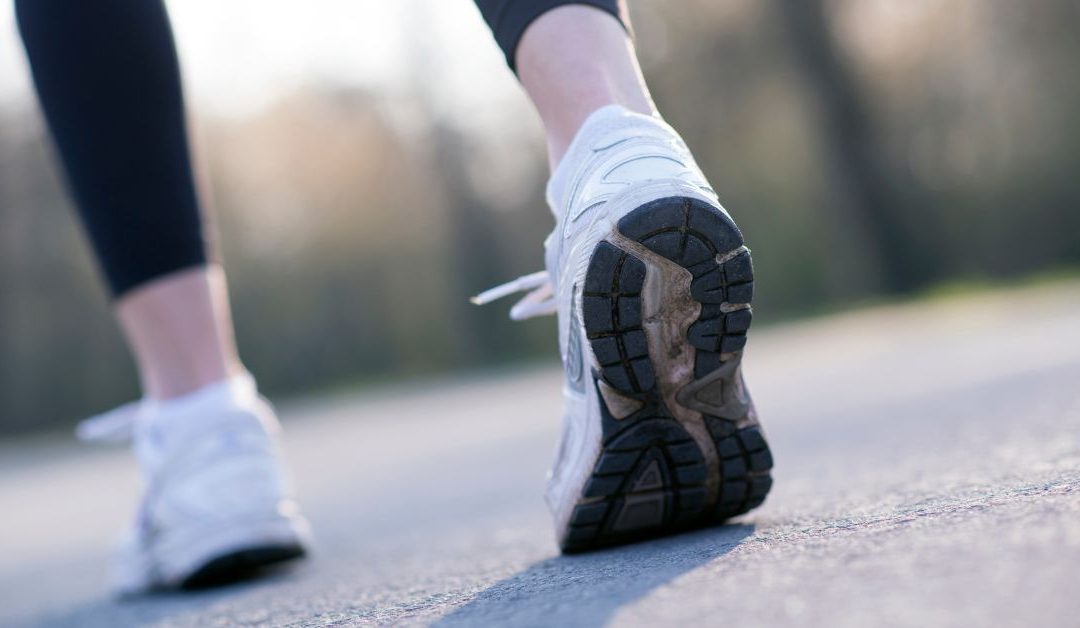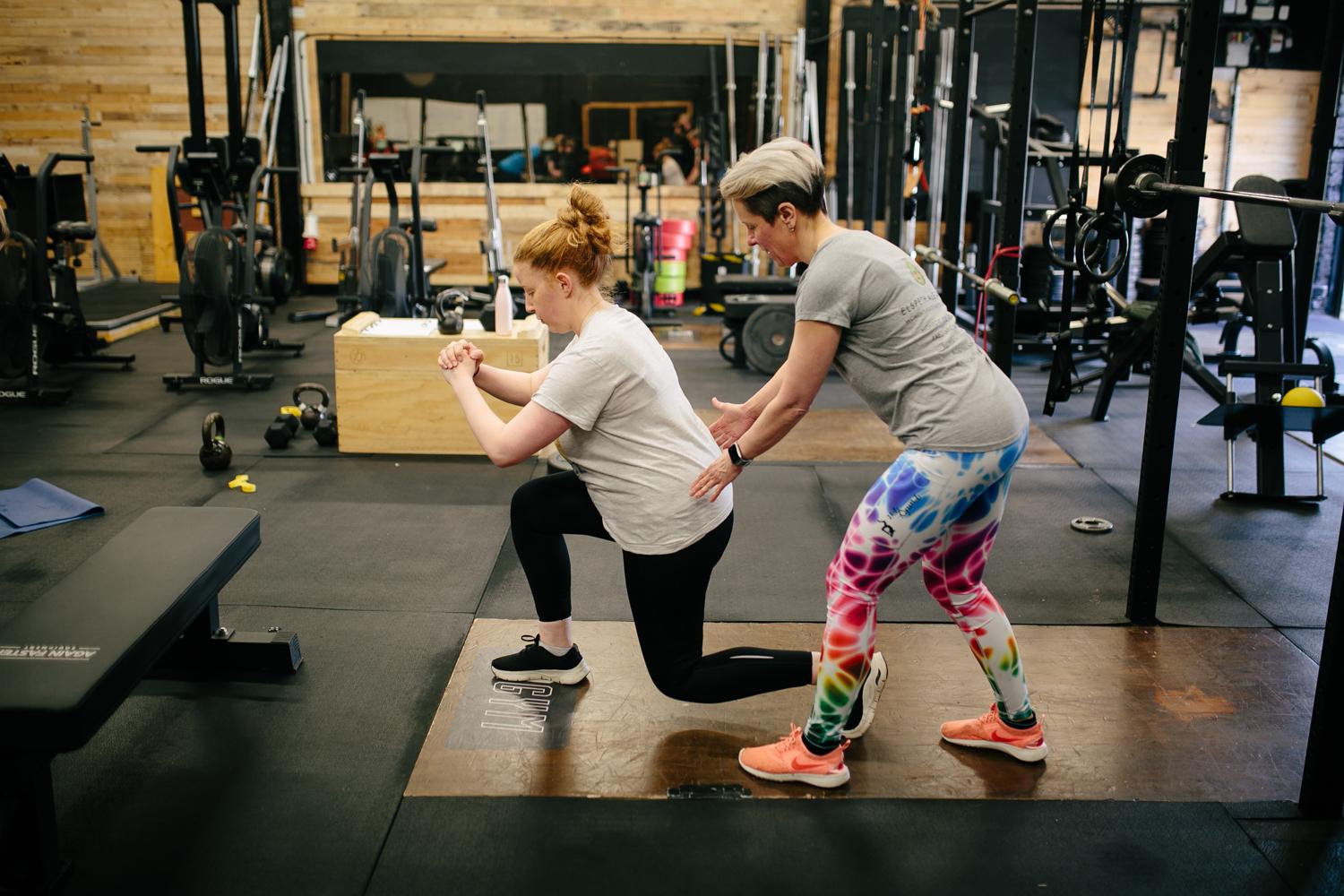Taking a break from running when you’re pregnant is a great idea for most women. Whether it’s because of nausea, tiredness, taking good care of your pelvic floor, or feeling a bit vulnerable and unstable, pregnancy is a great time to investigate non-running fitness options, like weight training, static cycling or low-impact interval training.
But if you’re a runner in your heart, you’ll want to get back to it as soon as you can after having a baby.
So what is the best way to plan your first postnatal run?
When I was about 10 weeks postnatal I finally plucked up the courage to leave the baby with gran, and the first thing I wanted to do was run. My priorities were finding enough bras to support my lactating boobs (at least 3 bras, at once) and being able to ‘prove myself’ by doing my old route 10k route non-stop.
I was left with the worst gut distress I’d ever had, barely making it home before exploding; agonising pelvic pain for 48 hours; and the worst muscle soreness I could remember. The rest of the week wasn’t pretty.
So how can you be smarter than that?
Your first postnatal run should not be until at least 12 weeks after you had your baby. If this sounds like a big ask, then after you’ve had your six week check from your GP you can work on speed walking intervals – for instance, 60s easy walking, 30s fast walking, or hill repeats where you power walk up a short hill at a good pace, then return and repeat.
It’s not just running: it’s running injury-free
Why do I need a plan?
For all its benefits, running is an activity that requires strength. Without strength, it can increase your chances of musculoskeletal injury and of pelvic floor problems like pelvic organ prolapse. These risks are increased in the postnatal period.
What do the experts say?
In 2019 a squad of ninja physiotherapists studied the consensus on women returning to running after having a baby, and produced a brilliant set of guidelines to help us.
Before you run, you should be able to do these things without pain or any leaking pee or poo.
- Single leg squats: best described as being able to go from standing to sitting down to standing up again, all on one leg without putting the other foot down. A set of 10 would be great.
- Walk for half an hour at a reasonable pace.
- Jump in place (like a bunny hop, feet together) for 30 seconds.
- Stand on one leg for 30 seconds (and the other leg too)
- Perform 20 single leg calf raises – up onto your tiptoe, and back down.
- Confidently do pelvic floor exercises.
There are also some essential investments.
You need to have a well-fitting bra. This is more than comfort (although comfort is a good enough reason!) A bra that doesn’t support you will slow you down, and also will reduce your capacity to rotate through your upper back. Good thoracic rotation is important to your running form – you should be able to swing your arms. And without your thoracic area being in a good position, you won’t be able to breathe well. That means you may be exacerbating any core and pelvic floor issues, and reducing your running efficiency.
You need new shoes. Yes, new ones. Your feet change in pregnancy, and like the rest of your body, they don’t go back to their pre-pregnancy state straight away. So get yourself to a shoe specialist who can check you for size and gait and give you shoes that are fit for purpose.
If you’re closer to 12 weeks than to 6 months, you might want to get yourself some EVB shorts. These provide gentle support for your core and pelvic floor. Not compulsory but nice. You can see them here https://evbsport.com/
You’ll need an app to time your intervals. I like Gymboss, which is free, but I’m sure there are others. https://gymboss.com/app-landing
You’re starting with a couch to 5k
What? But I’ve run a marathon! I know, but that was The Beforetimes. We need to check that your body is happy after all the life-changing work it’s done in growing and birthing and caring for a new human life.
There are many couch to 5k apps available. I recommend getting a 10-week one, and sticking with it.
Start with 30s rest, 30s recovery for 10 minutes. Yes, really. Your body loves adapting gradually, and when you take into account the curveballs of family life – teething, reflux, sleeplessness, colic, vaccinations – it’s hard to get on an even keel. If you find your body is responding well, use the couch to 5k to go a bit faster or hillier and up the cardio fitness element while not increasing the impact.
Plan your route
Start your couch to 5k on pavements or parks. Even if you’re used to trails, build up on an even surface. After a break, your feet and ankles can be vulnerable to injury, so let them strengthen up in a controlled environment.
Prepare your mindset
Prepare yourself psychologically to go for a nice walk, without your tiny human. And if it feels good, you’re going to run a bit. Because if you’re a runner, you won’t be ‘satisfied’ with 30s of running and 30s of walking for 10 minutes. You’ll want to go further and push harder, and that will overload your body and you won’t feel great afterwards. This first outing is testing the water. So don’t tell yourself you’re ‘going for a run’. Lower your expectations, and that way you won’t be tempted to do more than is sensible.
If you have a running buddy, send them this blog so they know they’re supporting your recovery, NOT giving you a challenge.
Leave your baby at home
Don’t bother investing in a running buggy, unless it’s for use by someone who’s strong and NOT recently postnatal. Pushing a baby or a toddler is more physically demanding than regular running. It reduces your ability to rotate, which is bad for your gait and your breathing, and thus your core and pelvic floor. Let your running be your me-time, and leave your baby at home.
Other things you need to think about to support your running
Building strength to support your running.
All good runners have a strength-training programme to help them avoid injury. Think squats, lunges and core strength – a good postnatal course like my Mighty Mums sessions is ideal.
Your nutrition needs to be on point.
Make sure you’re taking on protein within 30 minutes of your run – this requires preparation if you’re coming home to a hungry baby. Leave yourself a bowl of greek yoghurt with honey and almonds in the fridge, or a couple of boiled eggs and a latte, and make sure your babysitter knows not to eat them while you’re out.
Being a mum is hard on your body.
Lots of sitting in a feeding position can make your upper back tight and stiff and your lower back achey. Lots of kneeling and going from the floor to standing can give you knee ache like a 90-year-old. You’ll need to work on your mobility in these ‘hotspots’ so you can run well. This needn’t mean hours of yoga – a 15-minute session once or twice a week will start to help.
Your pelvic floor is weakened by pregnancy, labour and delivery.
Learn to do pelvic floor exercises properly and be consistent with your practice. Every day. Forever. I can help you with this too – my Holistic Core Restore® Everywoman course is designed to strengthen your pelvic floor and your core.
Rest and recovery are essential.
Let your running be interspersed with days where you rest and recover. Don’t run on back-to-back days. Remember that running is a stimulus, and you get stronger (and faster) when your body adapts to that stimulus. The adaptation happens when you RECOVER. Recovery is rest, good nutrition, hydration and sleep. Yes, sleep. If you can do the rest and recovery, it’s probably best not to do the run.
I recommend going to see a women’s health physiotherapist for a full postnatal checkup.
There you can expect to have a full examination of your pelvic floor, tummy muscles and top-to-toe biomechanics. Your physiotherpaist will give you guidance on any elements you need to work on, like pelvic floor exercise, glute (bum muscle) activation, balance or upper body mobility.
It can take up to two years for the postnatal body to fully heal. Everyone heals differently, and it doesn’t mean that we should all sit still for two years! So taking it cautiously and paying attention to the effects of running on your body is essential.
If you don’t want to run, there are lot of other things to do. Running is not a necessity, it’s an option. If it doesn’t make your heart sing, don’t do it – it’s no big deal.
But if you’re a runner at heart, whether you’re fast or slow – running is great. It’s good for heart health, bone health and mental health. It’s really convenient and fairly inexpensive. It can be a great way to hang out with friends and see your local environment.
I was a runner for 20 years, including in the years around the births of my children. I ran my first marathon before my daughter started primary 1, and I went on to run another 13 of them, including a qualifying time for the London Marathon. I coached school runners for 4 years and have been a jogScotland group leader. In September I will be coaching Runshine on Leith, a postnatal return to running course, with Kin Collective. If you’d like to join, drop me a line.



